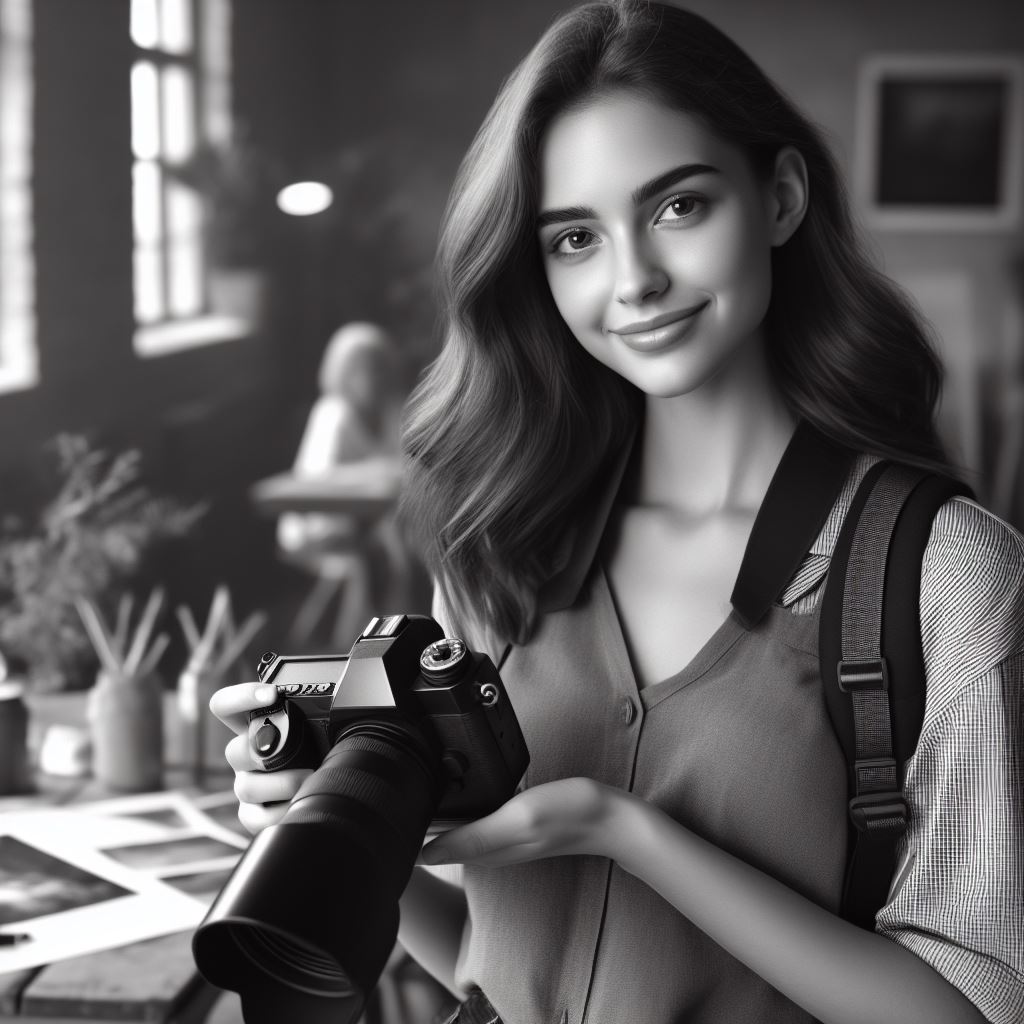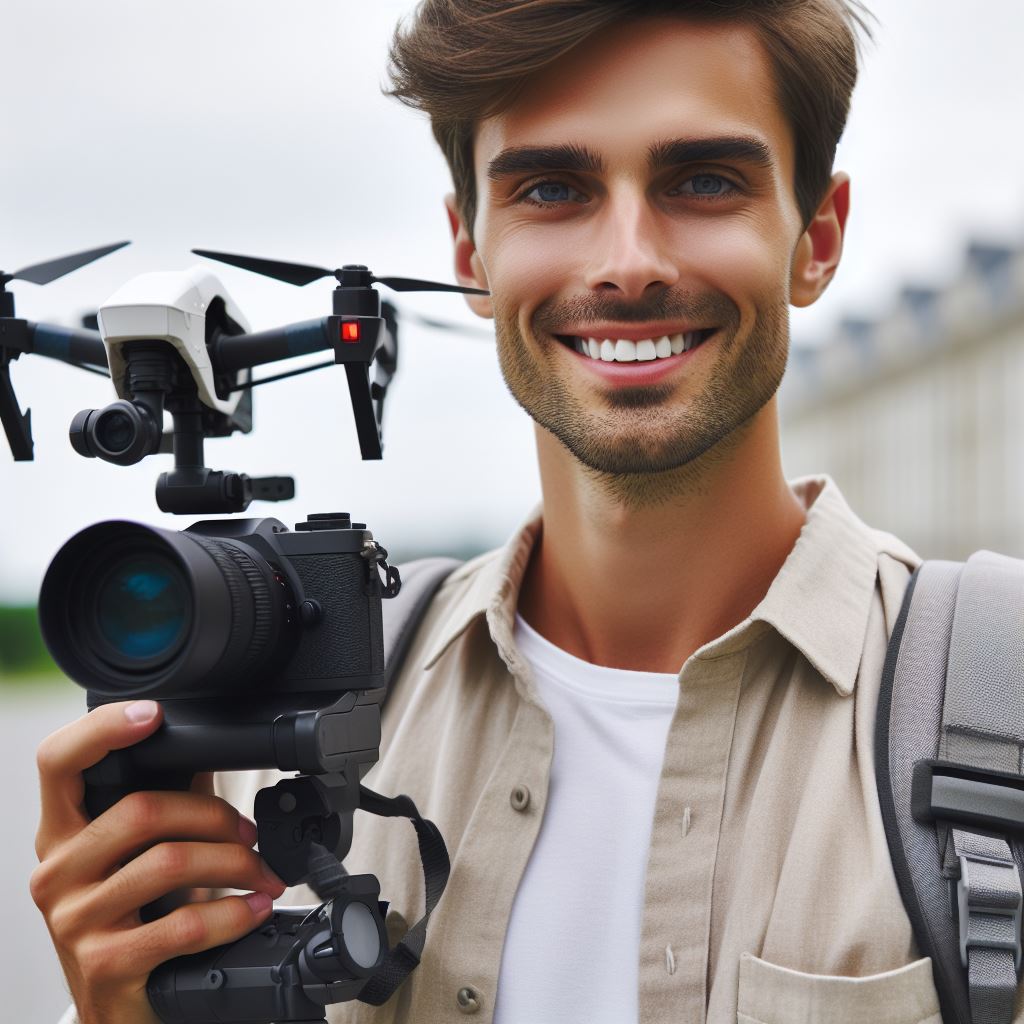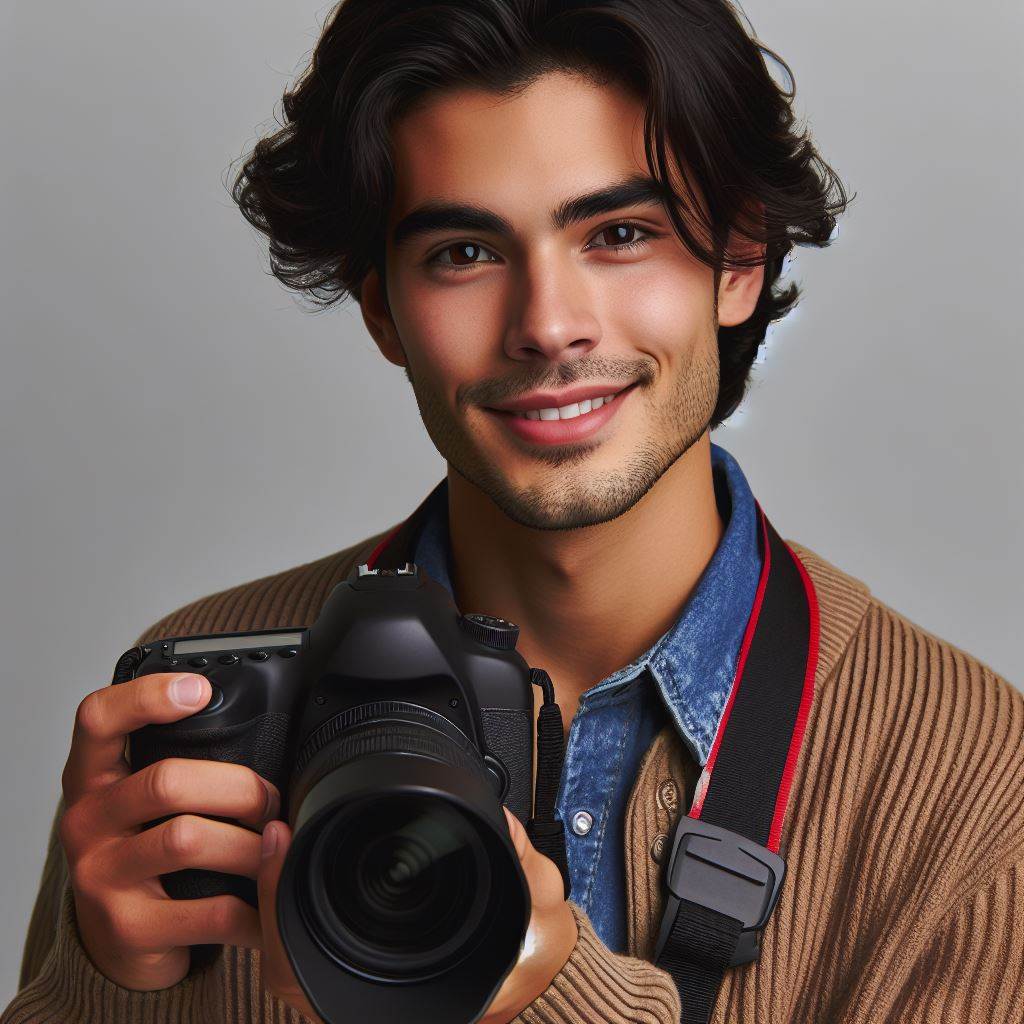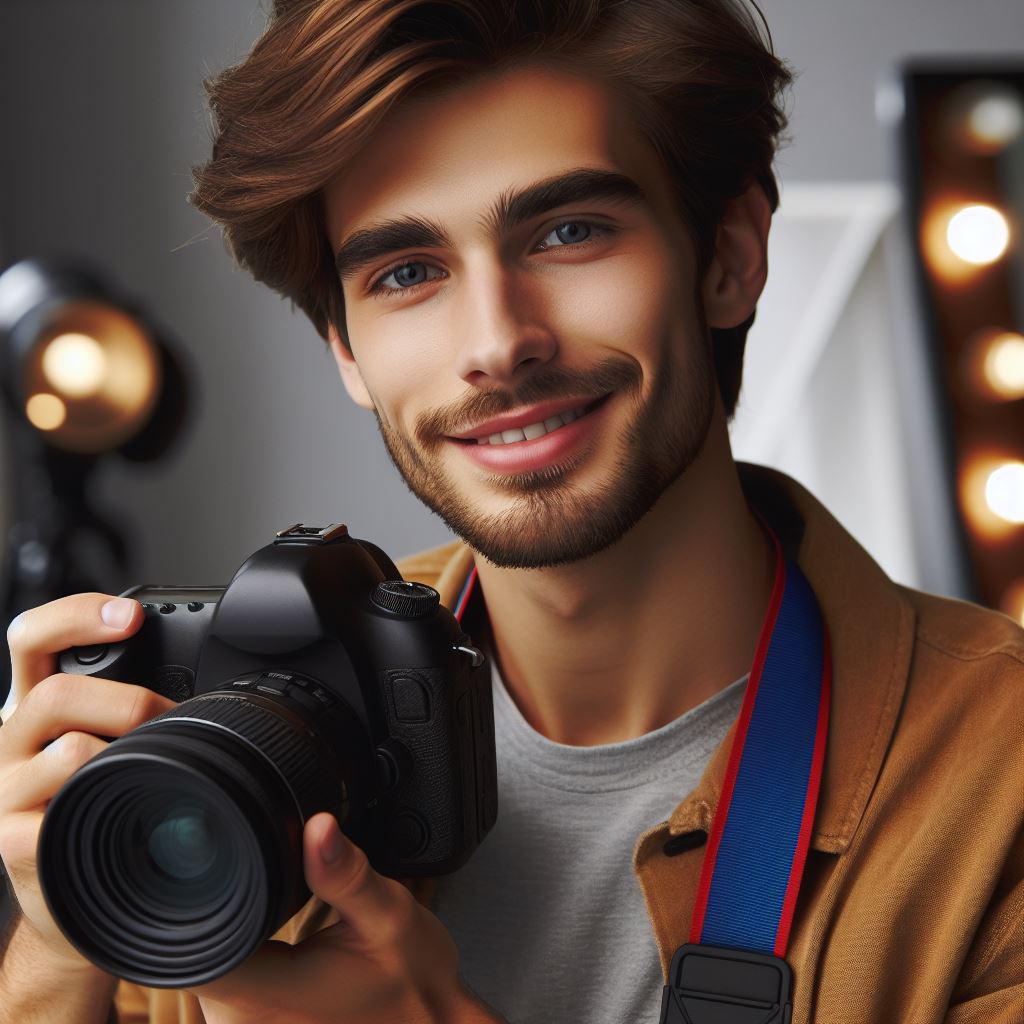Introduction
Photography laws in New Zealand are crucial for photographers to understand in order to protect their rights and avoid legal issues.
Knowing photography laws is essential for photographers to ensure they are not infringing on others’ rights or breaking the law unknowingly.
Photography laws in New Zealand cover various aspects such as privacy, copyright, and restrictions in certain locations.
In terms of privacy, photographers must be cautious when taking pictures of individuals without their consent, particularly in private spaces.
Copyright laws protect photographers’ creative work, ensuring that their images are not used without permission or proper attribution.
Additionally, there are restrictions regarding photography in certain locations like museums or government buildings, which may require prior permission or prohibit photography altogether.
Understanding these laws empowers photographers to navigate their field confidently and ethically, providing clarity in their rights and responsibilities.
By familiarizing themselves with these laws, photographers can avoid legal consequences and protect their artistic work while respecting the rights of individuals and property owners.
Overall, knowledge of photography laws in New Zealand is vital for photographers to operate responsibly and legally in their practice, ensuring a harmonious balance between artistic expression and legal compliance.
Overview of Photography Laws in NZ
In New Zealand, there are various laws and regulations that govern photography.
It is important for photographers to be aware of their rights and responsibilities when capturing images in public spaces.
A. Legal Context Surrounding Photography
Photography is generally allowed in public spaces in New Zealand, as long as it does not violate other laws.
However, certain restrictions apply in specific areas such as courtrooms, military installations, and private property.
Commercial use of photographs, including selling or licensing, may require additional permissions or releases.
Photography that involves invasion of privacy or harassment is not protected and can lead to legal consequences.
Personalized Career Consulting
Unlock your potential with expert career advice tailored to your goals. Get personalized guidance and actionable steps toward your dream career in New Zealand.
Get StartedB. Balance Between Privacy and Freedom of Expression
The legal context surrounding photography in New Zealand aims to strike a balance between protecting individuals’ privacy and allowing freedom of expression.
Privacy rights are protected under the Privacy Act 2020, which regulates the collection, storage, and use of personal information. This includes photographs that identify individuals.
However, privacy rights are not absolute and can be limited by other rights, such as freedom of expression.
Freedom of expression is protected under the New Zealand Bill of Rights Act 1990, which includes the right to seek, receive, and impart information and opinions.
This includes the ability to capture and share photographs as a form of expression.
There are certain situations where privacy interests may outweigh freedom of expression.
This can include cases where explicit consent has not been obtained, or if taking photographs would unduly intrude on an individual’s private life.
Professional photographers must exercise caution and be aware of the context in which they are capturing images.
They should obtain appropriate consent when necessary and respect the privacy of individuals they are photographing.
C. Key Takeaways for Photographers in New Zealand
- Photography is generally allowed in public spaces in New Zealand, but restrictions can apply in specific areas.
- Commercial use of photographs may require additional permissions or releases.
- Privacy and freedom of expression are both protected rights, and a balance must be struck.
- Privacy interests may outweigh freedom of expression in certain situations.
- Obtaining consent and respecting individuals’ privacy is crucial for professional photographers.
Read: Event Photography: Capturing NZ’s Moments
Privacy Laws
The Privacy Act in New Zealand is important for understanding the rights and responsibilities regarding photography.
It is essential to respect individuals’ privacy while engaging in photography activities.
Failure to comply with privacy laws can lead to legal consequences.
A. Privacy Act and its Relation to Photography
The Privacy Act 2020 in New Zealand governs the collection, storage, use, and disclosure of personal information.
Transform Your Career with a Professional CV and Cover Letter
Stand out to employers with an ATS-optimized resume and tailored cover letter designed to match your dream role. Let us craft your job application materials for success!
Get StartedPhotography often involves capturing images of individuals, which may be considered personal information.
Under the Privacy Act, photographers must have a valid reason for collecting and using personal information.
Consent plays a vital role in photography, and photographers must obtain consent before taking or using someone’s photograph.
If the purpose of photography is solely for personal or domestic use, the Privacy Act may not apply.
B. Different Rules for Public Places and Private Properties
Photography in public places generally allows capturing images without explicit consent.
However, it is important to consider the privacy rights of individuals who may be included in the photographs.
Commercial use of images taken in public places may require obtaining consent from identifiable individuals.
When photographing in private properties, such as homes or private venues, consent from the owner or occupier is necessary.
It is advisable to obtain written consent to ensure clarity and avoid any misunderstandings.
Special considerations should be taken when photographing children to protect their privacy and well-being.
C. Guidelines for Photographers to Comply with Privacy Laws
- Always consider the subject’s privacy rights and obtain consent before taking their photograph.
- When capturing images in public places, be cautious about including identifiable individuals without consent.
- Be aware of any signs or notices that restrict photography or prohibit entry into certain areas.
- Respect privacy when photographing events or activities that have an implied expectation of privacy.
- Obtain permission from parents or guardians before photographing children.
- Securely store any personal information collected during photography to prevent unauthorized access or use.
D. Consequences of Privacy Law Violations
- Violating privacy laws can result in complaints, legal actions, and financial penalties.
- The Privacy Commissioner can investigate complaints and take remedial measures if privacy rights are infringed.
- Photographers may be required to compensate individuals whose privacy has been violated.
- Being aware of and adhering to privacy laws is crucial for maintaining a positive reputation as a photographer.
- Regularly updating knowledge about privacy laws can help photographers navigate legal responsibilities effectively.
Understanding privacy laws is essential for photographers in New Zealand to respect individuals’ privacy rights and comply with legal requirements.
The Privacy Act governs the collection, use, and disclosure of personal information, with consent playing a crucial role.
Different rules apply to public places and private properties, requiring photographers to be cautious and obtain consent as necessary.
By adhering to privacy laws, photographers can ensure their activities are conducted ethically and lawfully, avoiding any potential legal consequences.
Boost Your Career with a Standout LinkedIn Profile
Attract recruiters and expand your network with a fully optimized LinkedIn profile tailored to highlight your strengths and professional goals. Let your profile open doors to new opportunities!
Get OptimizedTaking Photos of People
In New Zealand, the laws surrounding photography aim to strike a delicate balance between the right to privacy and freedom of expression.
As a photographer, it is crucial to be aware of the consent requirements and the exceptions and limitations that apply when capturing images of individuals.
Let’s delve into these aspects to ensure you know your rights.
A. Consent Requirements for Taking Photos of Individuals
Consent is generally required when taking photos of people in New Zealand.
As an ethical and responsible photographer, always seek permission before capturing someone’s image. Respect their right to privacy.
Consent can be obtained in different ways, such as verbal or written consent.
It is best to obtain written consent, especially in cases where the images might be published or used for commercial purposes.
Consent must be freely given, informed, and specific.
It is essential to explain the purpose of the photographs and how they will be used to ensure the individual understands and agrees to it.
B. Exceptions and Limitations to Consent
- Public Places: In public places, individuals have a reduced expectation of privacy, making it generally permissible to photograph them without their consent.
However, be mindful of capturing sensitive moments or causing distress or harassment. - Journalistic Purposes: Photographers pursuing journalistic activities have more freedom to capture images without explicit consent, given their role in providing information to the public.
However, always exercise ethical judgment and prioritize privacy when editing or publishing. - Events and Gatherings: Consent requirements may vary during organized events or gatherings.
If the event has a reasonable expectation of being photographed, such as festivals or public celebrations, individual consent may not always be necessary. - Artistic Expression and Public Figures: When photographs are taken for artistic purposes or involve public figures who are in the public eye, consent is not always required.
However, it is crucial to respect the boundaries of individuals and avoid capturing potentially invasive or offensive images. - Law Enforcement and Security: In certain situations involving law enforcement or security, consent may not be needed for photography.
However, it is advisable to exercise caution and consult legal advice to ensure compliance with any specific regulations or limitations.
C. Protecting Privacy and Balancing Rights
Balancing rights is crucial when taking photographs of people.
Consider the impact the images might have on individuals’ privacy and reputation.
Avoid capturing intimate or sensitive moments without explicit consent, as it may cause harm or distress to those involved.
Be considerate of cultural sensitivities and respect any restrictions or protocols for photographing certain individuals or communities.
Seek legal advice if unsure about consent requirements or if you plan to use the images for commercial purposes.
In fact, as a photographer in New Zealand, understanding the consent requirements and exceptions when taking photos of individuals is vital.
By obtaining consent in an ethical and informed manner, respecting privacy concerns, and being aware of the limitations, you can navigate the photography laws with confidence and integrity.
Remember, photography is a powerful tool, so wield it responsibly to capture moments that reflect the beauty of our diverse society while respecting the rights of individuals.
Read: Underwater Photography in NZ’s Seas
Photography in Public Spaces
Photography is a popular hobby that allows people to capture beautiful moments and express their creativity.
However, it’s important to be aware of the laws and regulations surrounding photography, especially in public spaces.
In New Zealand, photographers have certain rights and limitations when it comes to taking pictures in public areas.
Let’s explore these rights and restrictions to ensure that you can fully enjoy your photography experience while respecting the law.
A. Rights and Limitations
When photographing in public spaces, you have the right to capture images without obtaining consent from individuals in the frame.
This means you can take pictures of people, buildings, and objects as long as they are in a public area.
However, it’s important to remember that each individual has the right to privacy, so it’s crucial to be respectful and avoid intruding on someone’s personal space.
B. Sensitive Areas
While photography in most public spaces is allowed, there are limitations when it comes to sensitive areas.
These can include places such as hospitals, schools, and government installations.
In these locations, it’s essential to obtain permission or follow any specific guidelines set by the authority in charge.
For instance, you may need authorization to take pictures in hospitals to respect patient privacy.
C. Military Facilities
A special consideration should be taken when photographing military facilities.
These areas often have strict security measures in place, and capturing images may be prohibited.
It’s necessary to exercise caution and respect any signs or warnings indicating photography restrictions in these sensitive locations.
D. Prohibited Behaviors
Although photography is generally allowed in public spaces, certain behaviors are strictly prohibited.
This includes taking pictures with malicious intent, such as invading someone’s privacy, illegally obtaining sensitive information, or capturing explicit content without consent.
It’s crucial to always act ethically and avoid any actions that could harm or violate the rights of others.
E. Commercial Use
If you plan to use your photographs for commercial purposes, it’s essential to be aware of additional regulations.
In some cases, you may need to obtain permits or licenses to use images that feature identifiable individuals or private property.
It’s advisable to seek legal advice or consult relevant organizations to ensure compliance with these regulations.
F. Respecting Copyright
Apart from legal restrictions, photographers must also respect copyright laws.
It’s crucial to be aware that photographs may be protected by copyright, whether they feature individuals, famous landmarks, or artistic elements.
It’s always best to obtain permission or properly credit the original creator when using someone else’s work.
G. Tips for Responsible Photography
To ensure you are practicing responsible photography, keep the following tips in mind.
Firstly, be mindful of your surroundings and respect private property.
If you are uncertain whether photography is allowed in a particular area, it’s best to seek permission or ask someone in charge.
Additionally, when capturing images of people, always be respectful and obtain consent if necessary.
Lastly, remember that photography should be a positive and inclusive experience, so avoid any activities that may cause harm or discomfort to others.
In short, understanding your rights and limitations when it comes to photography in public spaces is crucial.
By being informed, you can enjoy your photography hobby while respecting the privacy and dignity of others.
Remember to always act responsibly, seek permission when needed, and respect any specific guidelines or restrictions in sensitive areas. Happy clicking!
Read: Photography Gear: What NZ Pros Recommend
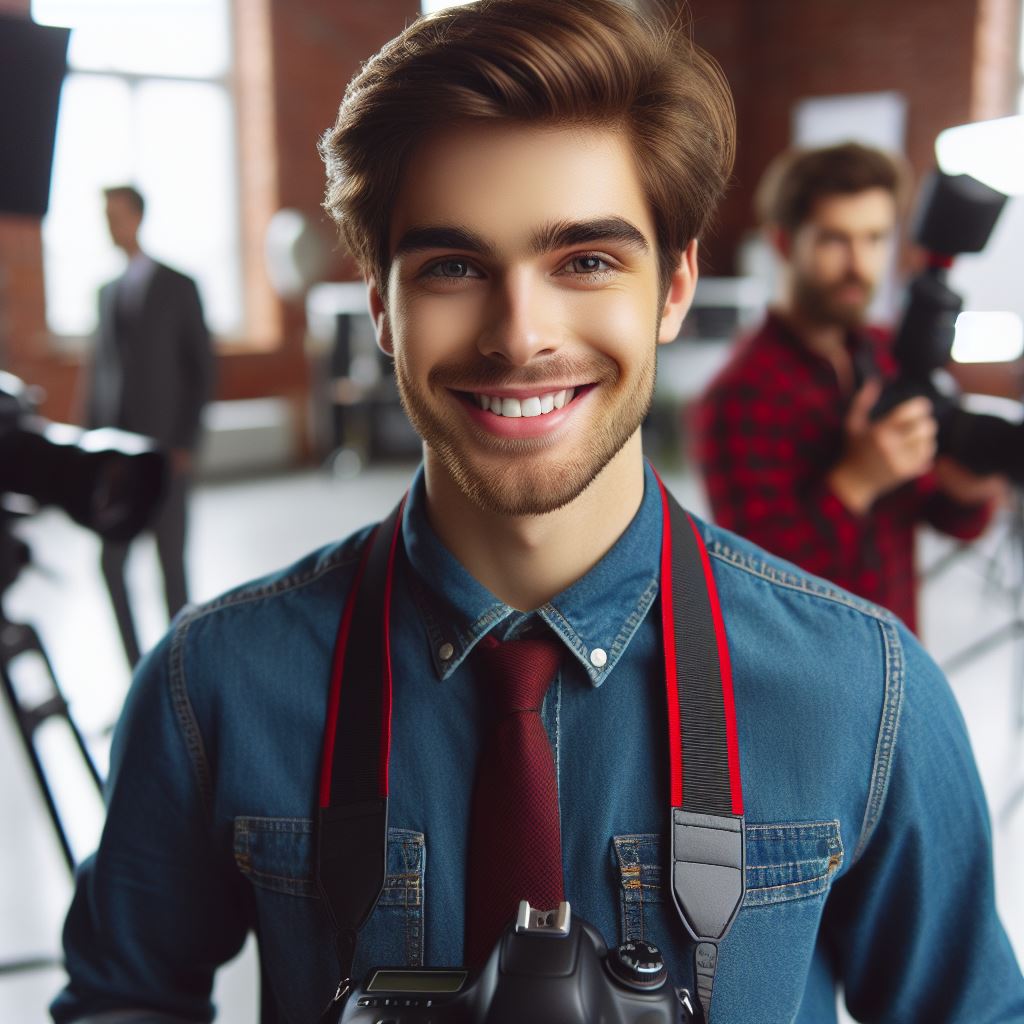
Copyright Law and Photography
Photography, as a form of creative expression, is protected by copyright law.
Copyright law safeguards original works of authorship, including photographs, from unauthorized use.
Understanding copyright law is essential for photographers to protect their creative endeavors.
A. Copyright law and its application to photography
- Copyright protection automatically applies to original photographs upon creation.
- Photographers hold the exclusive rights to reproduce, distribute, and display their images.
- These rights enable photographers to control how their work is used and shared.
- Copyright duration for photographs in New Zealand extends for the creator’s lifetime plus 50 years.
- Registration of copyright is not required for protection, but it provides additional legal benefits.
- Moral rights ensure photographers receive attribution and maintain the integrity of their work.
- Exceptions to copyright law include fair dealing provisions for purposes such as criticism and news reporting.
- However, commercial usage without permission remains prohibited under copyright law.
B. Ownership, infringement, and licensing
1. Ownership
Photographers maintain ownership of their images unless explicitly transferred to another party.
2. Infringement
Unauthorized use of copyrighted photographs constitutes infringement, subject to legal action.
Penalties for infringement may include damages, injunctions, and the seizure of infringing materials.
3. Licensing
Photographers can grant licenses to others for specific uses of their photographs.
Licensing agreements outline the terms, conditions, and limitations of use, providing legal clarity.
Types of licenses include exclusive, non-exclusive, commercial, and editorial licenses.
Exclusive licenses grant sole usage rights to the licensee for a specified duration.
Non-exclusive licenses allow multiple parties to use the photograph simultaneously.
Commercial licenses permit the use of photographs for commercial purposes, such as advertising.
Editorial licenses restrict usage to editorial purposes, such as news reporting and educational publications.
Clear licensing agreements help photographers protect their rights and earn income from their work.
It’s crucial for photographers to understand their rights and responsibilities under copyright law.
Seeking legal advice can provide clarity on complex copyright issues and protect photographers’ interests.
Additionally, watermarking and metadata can deter unauthorized use and facilitate copyright enforcement.
By respecting copyright law, photographers contribute to the integrity and sustainability of the creative industry.
Most importantly, copyright law plays a vital role in safeguarding the rights of photographers in New Zealand.
Understanding the principles of copyright, ownership, infringement, and licensing empowers photographers to protect their creative works and negotiate fair agreements with others.
Compliance with copyright law not only preserves the integrity of photography but also fosters a thriving and ethical creative community.
Read: Future of Photography: NZ Industry Insights
Drone Photography
A. Regulations and restrictions for drone photography
Drone photography has gained immense popularity in recent years, allowing photographers to capture breathtaking aerial shots.
However, it is crucial to understand the regulations and restrictions surrounding drone photography to avoid any legal consequences.
B. Civil Aviation Authority’s rules
The New Zealand Civil Aviation Authority (CAA) has implemented rules to ensure the safe and responsible use of drones.
These rules aim to protect the privacy of individuals, prevent accidents, and maintain the integrity of airspace.
C. Key regulations and restrictions for drone photography in New Zealand
Here are the key regulations and restrictions for drone photography in New Zealand:
- Registration: All drones weighing over 25 kilograms must be registered with the CAA before operating in New Zealand.
- Flight Zones: Different flight zones have been designated to categorize the level of restriction and permission required.
It is essential to be familiar with these zones before flying your drone. - Height Restrictions: The maximum allowable height for drones is 120 meters above ground level.
This restriction ensures the safety of manned aircraft and prevents unauthorized intrusion into controlled airspace. - Flight Path Restrictions: Drones must not be flown within 4 kilometers of any aerodrome or in a way that creates a hazard to manned aircraft.
- Privacy Protection: When capturing photographs or videos, it is essential to respect other people’s privacy.
Avoid flying over private properties or public spaces where individuals have a reasonable expectation of privacy. - Proximity to People and Properties: Drones should not be flown within 4 meters of people who are not associated with the operation and must not endanger or damage any person or property.
- Permission: If you intend to fly your drone in controlled airspace, you must obtain permission from the appropriate authorities in advance.
- Daylight Operation: Drone photography is permitted only during daylight hours, which are defined as 30 minutes before sunrise until 30 minutes after sunset.
Flying in darkness or poor visibility conditions poses significant risks. - Visual Line of Sight: Operators must maintain a clear and unobstructed visual line of sight with their drone at all times during flight.
- Obstacle Avoidance: Operators must take all necessary precautions to avoid collisions with people, objects, or other aircraft in the vicinity.
D. Failure to comply with these regulations
Failure to comply with these regulations can result in hefty fines or even imprisonment.
It is essential to stay updated with any changes in the rules and ensure that you are aware of your rights and responsibilities as a drone photographer.
Before operating your drone, make sure to read and familiarize yourself with the official guidelines provided by the CAA.
Additionally, consider joining a local drone community or organization where you can exchange knowledge and keep abreast of any developments in the field.
Drone photography can be a rewarding and exhilarating experience, but it is our collective responsibility to follow the rules and fly safely.
By understanding and respecting the regulations, we can continue to enjoy the art of aerial photography while preserving the rights and privacy of others.
What to Do if Your Rights are Violated
A. Steps to take if someone violates your rights
- Understand your rights: Familiarize yourself with the laws of photography in NZ to know when your rights are violated.
- Document the violation: Take photos or videos of the incident as evidence to support your claim.
- Gather witnesses: If there were any witnesses present, ask them to provide statements or contact information.
- Communicate with the violator: Politely approach the person who violated your rights and explain your concerns.
- Seek resolution: Try to negotiate a resolution with the violator that satisfies both parties.
- Report the incident: If the violator refuses to cooperate or the violation is severe, report it to the appropriate authorities.
- Contact a lawyer: Consult with a lawyer who specializes in photography laws to understand your legal options.
- Provide evidence: Present the evidence you gathered, such as photos, videos, and witness statements, to your lawyer.
- File a complaint: Your lawyer can guide you in filing a formal complaint with the appropriate legal authorities.
- Cooperate with investigations: If an investigation is initiated, fully cooperate with the authorities and provide any additional requested information.
- Seek legal assistance: If necessary, discuss the possibility of taking legal action against the violator for compensation or to enforce your rights.
B. Reporting incidents and seeking legal assistance
- Reporting incidents: Reporting incidents promptly is crucial to ensure accountability and prevent further violations.
Contact local law enforcement or the appropriate regulatory body, such as the Privacy Commissioner, if privacy rights are involved. - Providing details: When reporting an incident, provide clear and concise details of what happened, including the date, time, location, and individuals involved. Include any relevant evidence you gathered.
- Seeking legal assistance: If your rights have been violated and the violator is unresponsive or the violation is significant, seeking legal assistance is advisable.
A lawyer will guide you through the legal process, assess your chances of success, and advocate on your behalf. - Choosing the right lawyer: Selecting a lawyer experienced in photography laws is crucial for a successful resolution.
Consider their expertise, track record, and any recommendations or reviews from trusted sources. - Legal options: A lawyer will outline your legal options, such as sending a cease and desist letter, pursuing a civil lawsuit for damages, or seeking a court injunction to stop further violations.
- Mediation and negotiation: In some cases, mediation or negotiation may be recommended to resolve the issue without going to court.
A skilled lawyer can help facilitate productive discussions to find a mutually agreeable solution. - Costs and fees: Discuss the costs and fees associated with legal assistance upfront with your lawyer.
They can provide an estimate of the expenses involved and any potential payment options, such as contingency fees or legal aid.
Remember, knowing your rights and taking appropriate action is essential to protect yourself and uphold the laws surrounding photography in NZ.
By following the steps outlined above and seeking legal assistance when necessary, you can assert your rights and ensure justice is served.
Conclusion
The significance of comprehending photography laws in New Zealand cannot be overstated.
Respect for the rights of individuals regarding privacy and property is paramount.
It is imperative to remain well-informed about the legal intricacies that govern photography practices in the country.
Understanding the permissible and restricted areas for photography is fundamental.
Always exercise due diligence and seek explicit permission when capturing images in sensitive locations or private spaces.
By doing so, you not only adhere to legal requirements but also demonstrate respect for the rights of others.
Remaining vigilant about any alterations or updates in photography laws is equally crucial.
Laws may evolve, and staying abreast of these changes ensures that you are consistently operating within the boundaries of legality.
This proactive approach empowers you as a photographer, allowing you to navigate the dynamic landscape of legal regulations effectively.
The key takeaway is to approach photography with responsibility, ethics, and mindfulness.
Uphold the principles of respect and consideration for the privacy and property of individuals you may inadvertently capture in your photographs.
This is not merely a legal obligation but a moral imperative.
As a parting encouragement, embracing an ongoing commitment to staying informed and respecting the rights of others in your photographic pursuits is the mark of a responsible and conscientious photographer.
By doing so, you contribute to fostering a culture of ethical and lawful photography, enriching both your own experience and the broader community’s perception of this expressive art form.

